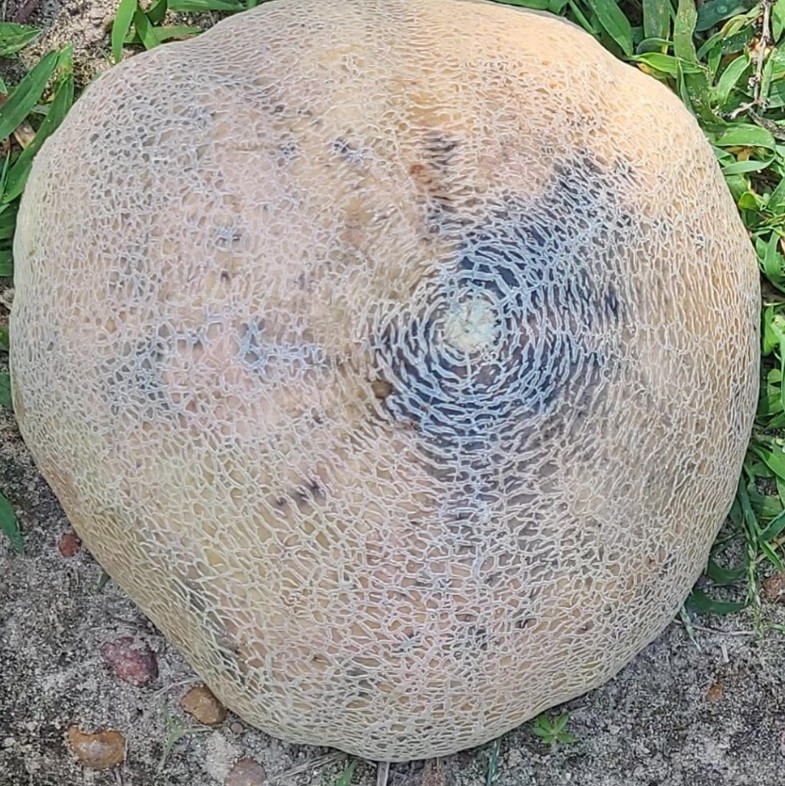Charcoal rot was identified in a cantaloupe crop in South Carolina last week, according to The South Carolina Grower. The fungus responsible for the disease is Macrophomina phaseolina. It is a soil-borne fungus that survives as microsclerotia.
Typically, the disease is more prevalent in hot, dry conditions, which has been the norm across the state in recent weeks. In cantaloupes, the disease is a post-harvest disease, often with no visible external symptoms to the fruit.
The fungus affects more than 800 host plants. These range from corn and soybean to potato and strawberry. Watermelon is also a good host, while cucumber and squash are less susceptible than cantaloupe.

Symptoms
If the cantaloupe plant is infected with the Charcoal Rot disease, the vine may wilt under high temperatures and fruit load. If inspecting the plant’s crown (at the soil line), cankers can be visible. They are similar to a gummy stem blight canker. But unlike gummy stem blight, fruiting bodies will not be present.
The example found showed no visible symptoms on the fruit’s exterior. However, 12 hours after harvest, the fruit began to collapse.
Treatment and Management
There are no effective conventional or organic fungicides for minimizing the rot, either preventative or curative.
Rotation is crucial. It is important to avoid susceptible hosts for 2 to 3 years, which can reduce the severity of infection. Wheat and rye are the best crops for rotation. Do not use corn, sorghum, sunflower, or any legumes, including soybean, southern pea, green bean or peanut, in the rotation.
Fumigants may be effective in reducing the viable microsclerotia in the soil.
When cultivating the field after the season, cultivate the affected area of the field last, and sanitize equipment to prevent spreading the sclerotia to other “clean fields.”










